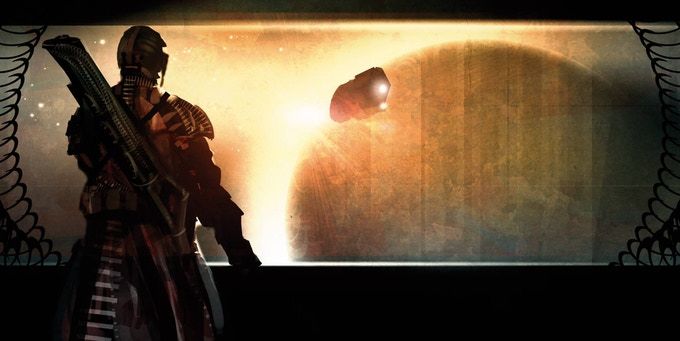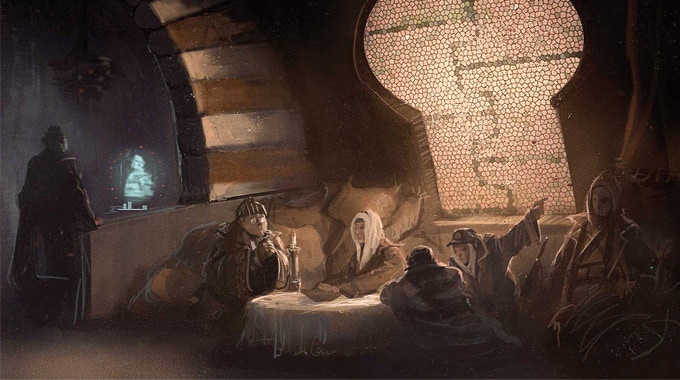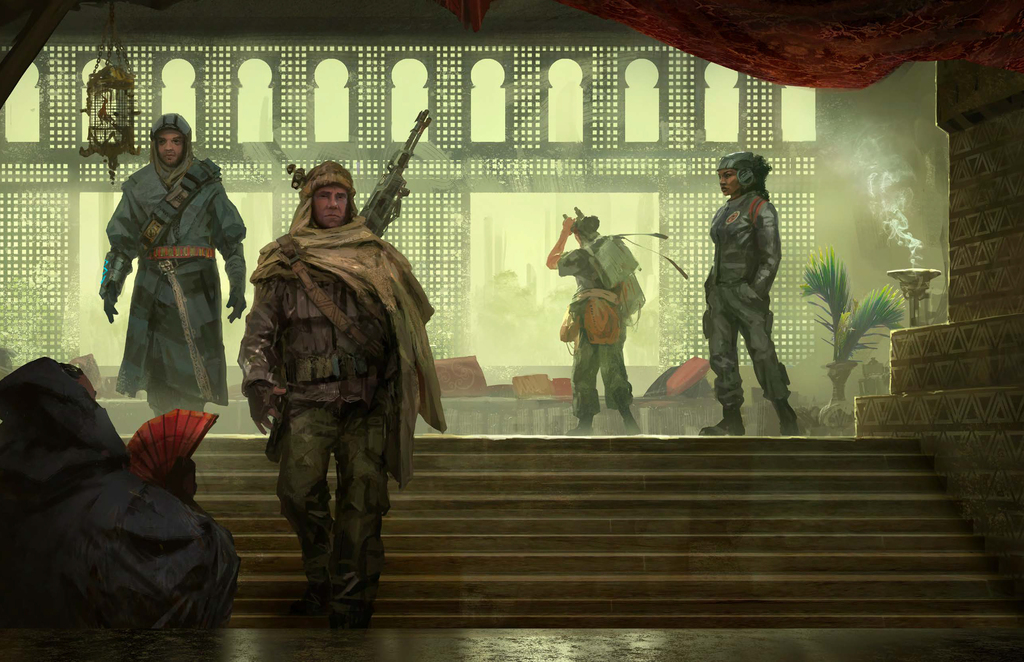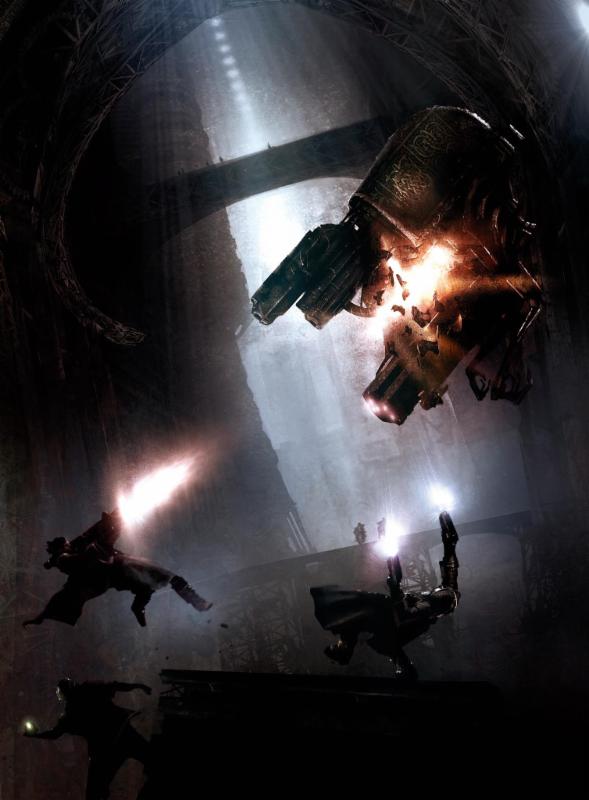
Free League Publishing have quickly found a soft spot in my heart, like some burrowing parasite that lays its eggs in there to be whisked off around the body until they hatch. I had heard very good things about Tales From the Loop/Things From the Flood, but I hadn’t actually paid them much attention until they announced Alien, and anyone who knows me knows that if there’s one movie monster I fucking love it’s good ol’ face hugging, chestbursting head chomping xenomorphs. I fell in love with the system, so simple and yet so very good at representing the players’ slowly rising panic, and I’ve run several games of it since it came out almost a year ago. I’ve since gone in hard on Free League games, picking up Tales/Things From the Loop/Flood, Vaesen, Symbaroum, and now Coriolis: The Third Horizon. I haven’t actually sat down to play it yet, but I know the core system inside out from all the other Free League games (with some small modifications of course), and I know that any game using that as its core is easy to learn, versatile and doesn’t bog the story down in working out complicated dice rolls. These are all things I love as a GM, and the only thing that would spoil them really is a terrible GM or a dull setting.
Thankfully, I’m actually a pretty fucking good GM, and more to the point, Coriolis is not at all dull.
One thing that I cannot stress enough about Free League’s games is how good the artwork is. It ranges from super-detailed to almost abstract broad strokes, but it’s always vivid and colourful and very much in harmony with the writing. Even Alien’s dimly lit, grimy starship interiors are balanced with blazing fires, bright splashes of yellow-green acid blood and the multi-hued glare of CRT computer monitors. So it’s no surprise that Coriolis is, upon first glance, fucking gorgeous.
Space is vast and dark, but the stars and planets blaze with colour. The setting’s “Arabian Nights in Space” aesthetic is very strong, with architecture, fashion, customs and landscapes drawing heavily from North African, West Asian and some South European cultures. First impressions put me in mind of Destiny 2 at times, with places, people and even starships sporting a blending of sleek and futuristic with the sort of decorative embellishments you might expect to see adorning a priceless museum artifact. If you can picture “Warhammer 40K but flying space-mosques instead of Space-Catholic” you’re headed in the right direction. Souks, bazaars, cantinas and oases are more likely where your adventures will take you, as well as space.
What of the lore? Well, There have been three great pushes by humanity in colonising the stars over history, and each new region was called a Horizon. Somewhere in the distant past, the first Portals were discovered; The first cluster of worlds colonised by Portal travel was called the First Horizon, and so on. A schism grew between the First and Second Horizons as people flocked to the Third to escape the increasing oppression of the others. At some point in the past the Portal Wars began across all Horizons, and ended, at least in the Third, with a battle that destroyed the Third Horizon’s only link to the older Horizons. There was a long dark age after that, until a ship called the Zenith appeared. It was a colony ship carrying hundreds of thousands of people in cryostasis from ancient Earth, and they were quite surprised to find that the star system they’d set out to colonise had already been colonised 500 years before they arrived. Still, they couldn’t just head back, so they elected to turn their massive colony ship into an equally massive space station dubbed Coriolis. Today it functions as a sort of Babylon 5/Deep Space Nine for all the peoples of the Third Horizon. Which is to say it’s full of diplomats, traders, emissaries, crooks, assassins, religious zealots and enough courtly intrigue to put Game of Thrones to shame. Entire campaigns could be set there without the players having to leave.

Enter the players! And your ship! The game revolves around the crew of a ship, who may have a patron or other authority to send them on missions, or who may be freelancers, scavengers, explorers or whatever. Like the other Free League games there’s a *sort* of class system which gives access to a list of exclusive abilities, but everyone gets the same points for their attributes and skills, as well as a generic list of abilities, so there’s a tonne of possible within classes. When a roll is called for, you add the relevant attribute and skill and roll that many d6. If you get at least one 6, you pass. Roll three or more 6s and you have a critical success. In combat you can trade excess 6s for benefits like damage or called shots. If you want, you can “Pray to the Icons” (the Icons are the main pantheon of gods in the Third Horizon, quite beautifully represented in the deck of cards that comes with the game), and re-roll the dice in a test that didn’t come up 6. If you do that though, the GM gets a Darkness Point. Which brings us to the Darkness Between the Stars. It’s an unknown (perhaps unknowable) force which spawns all manner of evil and corruption. Possession, ethereal monsters, even powerful djinni can all be introduced by the Darkness. The antagonists at the back of the book often have special abilities that can be activated by Darkness Points, so the player really has to consider whether re-rolling those dice might lead to horrible consequences later on. It’s a simple twist that’s at once similar to their other games but tailored towards the mystical almost heroic aspect of the setting instead of, say, the grim tension and horror of Alien. There are more little twists, but suffice to say it’s very simple as mechanics go and I like it a lot.
What else? Well, there are over 30 systems in the Third Horizon, some safe, others horrifically dangerous. There are jungles and deserts and forests and swamps, mighty cities and squalid backwater settlements. Religion and social etiquette are very important to the various cultures, and play a major role in the mysticism most people apply in their daily lives. While the setting is very human centric there *are* a couple of alien species you can play if you want, albeit with the caveat that they are seen by most as a bit primitive, and by some as amusing pets. Oh, yeah, there’s some slavery, because RPG designers love having slavery in their settings for some reason. You can ignore it if it bothers you; the Third Horizon is a big place with plenty of other things to do after all.

And that’s basically (very basically) Coriolis: The Third Horizon. It’s well-presented, very simple mechanically, rich in lore and fluff, and from the looks of it has strong support from the publishers (“The Free League” is a faction in the setting that the publishers took their name from, so it’s safe to say they’re fans). I am absolutely dying to get a game of it going some time soon. Once I’m done with Gaelcon, perhaps…




